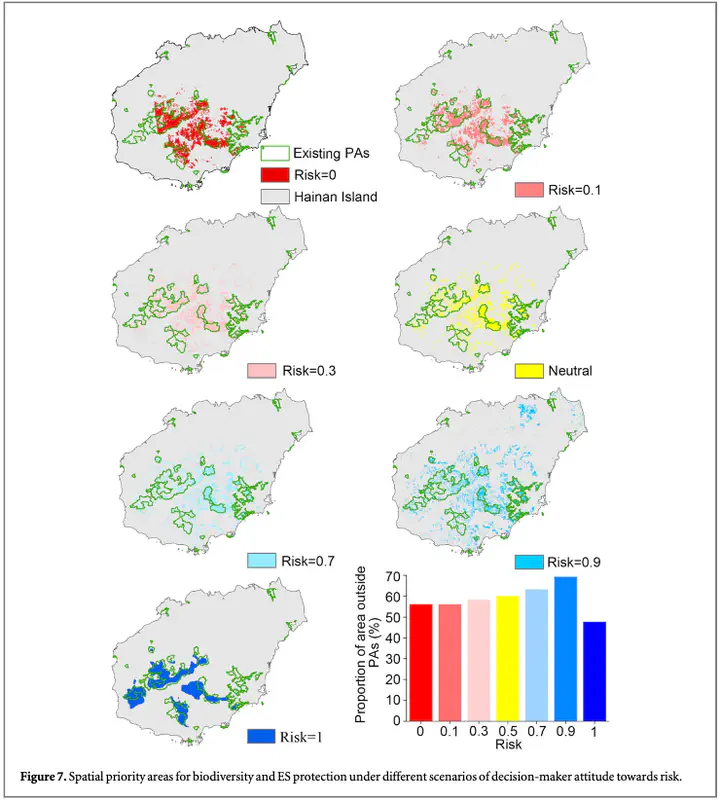Spatial priorities for biodiversity and ecosystem services considering theoretical decision-makers' attitudes to risk

Abstract
Choosing appropriate spatial priorities for protected areas (PAs) to conserve ecosystem services (ESs) and biodiversity is a challenge for decision makers under limited land resources, especially when facing uncertain protection consequences or conflicting protection objectives. Attitudes toward risk will influence actions, which will, in turn, impact consequences. To understand how theoretical decision-makers’ attitudes towards risk impact protection effectiveness for biodiversity and ESs (e.g., water retention, soil retention, flood mitigation, water purification and carbon sequestration) and how this information can be integrated into effective PAs management, we examined Hainan Island as a case study. We used the ordered weighted averaging (OWA) algorithm to assess the impact of attitude towards risk in PA management. Decision-makers’ attitude towards risk scenarios (from risk-averse and risk-taking) showed higher mean protection effectiveness (2.41–2.85) than existing PAs (2.37), indicating that there is still room for improvement in biodiversity and ESs conservation in existing PAs. In addition, among the seven examined risk scenarios, the higher risk aversion scenario showed the best outcome. In comparison to existing PAs, this scenario improved mean protection effectiveness (20.13%) as well as the protection effectiveness of water retention (24.84%), water purification (11.46%), flood mitigation (8.84%), soil retention (16.63%), carbon sequestration (5.31%), and biodiversity (12.84%). Thus, our research shows that the influence of theoretical decision-makers’ attitudes towards risk could be considered by OWA method which could provide a normative model of what the right choice given theoretical risk attitudes is while selecting priority area for biodiversity and ESs.